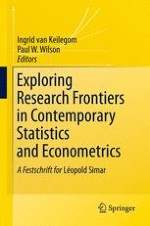2012 | OriginalPaper | Buchkapitel
2. Production Efficiency versus Ownership: The Case of China
verfasst von : Alice Shiu, Valentin Zelenyuk
Erschienen in: Exploring Research Frontiers in Contemporary Statistics and Econometrics
Verlag: Physica-Verlag HD
Aktivieren Sie unsere intelligente Suche, um passende Fachinhalte oder Patente zu finden.
Wählen Sie Textabschnitte aus um mit Künstlicher Intelligenz passenden Patente zu finden. powered by
Markieren Sie Textabschnitte, um KI-gestützt weitere passende Inhalte zu finden. powered by
